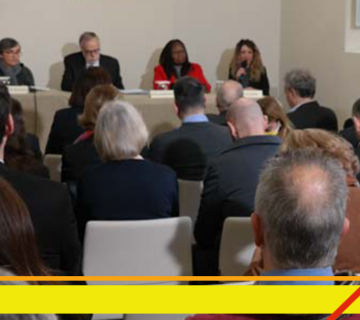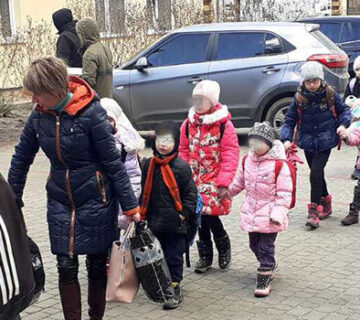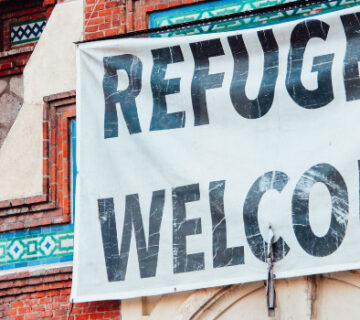 The first of the little towns of the Focolare Movement (there are now 33 of them existing in different parts of the world) has celebrated its 40th anniversary.
The first of the little towns of the Focolare Movement (there are now 33 of them existing in different parts of the world) has celebrated its 40th anniversary.
Situated among the hills of Tuscany in the province of Florence, Loppiano is in the municipality of Incisa in Val d’Arno. This little town thrives with schools, business enterprises, art centers and now counts close to 1000 inhabitants from 70 different nations, that range from Russia to Portugal, from Jordan, Lebanon, Egypt to Burundi, Congo, and South Africa, from the USA, Mexico, Patagonia, Japan, China, Korea, and the Philippines to Australia and New Zealand. Peopled by students, university professors, professionals, crafts people, agriculturists, artists, families, religious and diocesan priests, Christians of different Churches and faithful of other religions, Loppiano is indeed a prototype of a new society founded on the evangelical law of love.
A little town that reflects an ideal of unity and peac
People who have given life to a new philosophical, ideological or spiritual current usually dream of building a little town that could reflect their ideas. This is also true of Chiara Lubich, foundress of rhe Focolare Movement. In 1962, while she was on a visit to the Benedictine Abbey of Einsiedeln (Switzerland), which has stood as one of the centers of Christian influence in the development of European civilization, she had the intuition that modern little towns would have emerged all over the world, made up of houses, schools, factories, etc. Over 40,000 visitors go to Loppiano every year, and together with Loppiano’s inhabitants, they contribute to composing that design of unity which is at its foundation.
The church of the little town is named “Mary, ‘Theotokos’” (Mother of God)
Loppiano’s 40th anniversary was marked by the inauguration of the church, dedicated to Mary, Theotokos ( Mother of God). The solemn ceremonies took place at 11 a.m. on October 30 (Saturday), 2004, presided over by Cardinal Ennio Antonelli (Metropolitan Archbishop of Florence) and Bishop Luciano Giovannetti of the diocese of Fiesole. The entire project enjoyed the support of the Italian Bishops’ Conference.
The Church is a project of Ave Center
The Ave Center, whose headquarters are at Loppiano, designed and followed up the construction. The Ave Center is entirely made up of women artists (a sculptress, 3 architects and 3 painters). The church, which delicately stands out against the hills, is shaped like a large inclined plane which rises from the ground and soars to the peak of the construction. It is crowned by a bell tower, which is covered by a golden triangle symbolizing the Trinity.
How the idea was born; about the ecumenical chapel
In the interior, at the center of the presbytery is a broad stained-glass window in vibrant shades of blue that serves to protect the golden tabernacle. Sculptress and designer, Ave Cerquetti, says, “Through the form of the church, I wanted to express the greatness of Mary, the Mother of God, Mary who is therefore great beyond all imagination, as the Church confirmed during the early Councils. Yet she is like an inclined plane that gently goes from the earth up to heaven, to God.”
On the first floor of the bell tower, there is the ecumenical chapel.
 In this church, Mary is not honored by Christians alone
In this church, Mary is not honored by Christians alone
To the right as one enters the church, one sees an image of Mary and the Child, decorated in gold leaf and semi-precious stones. It is a gift from India, created by a Hindu artist.
Also present at the ceremony was Master Pra Maha Thongrattana, a Thai Buddhist monk. His stay at Loppiano in 1992 proved to be decisive in opening a fruitful dialogue between the Thai Buddhist monks and the Focolare Movement.
 The new church also contains the remains of Renata Borlone
The new church also contains the remains of Renata Borlone
Renata (1930-1990), had been a builder and co-director of Loppiano for many years. Her process of beatification is underway.
The “Lionello Bonfanti” business park
Also marking Loppiano’s 40th anniversary is the construction of the business park, through the support of 5,615 stockholders under the management of the “E.di C. S.p. A.” Society (Economy of Sharing Society, Limited) which was formed in the year 2001 (www.edicspa.com). Similar business parks are already operating or are underway in Brazil, Argentina, USA, Portugal, France and Belgium. These parks were born to give visibility to the Economy of Communion, which is the driving spirit behind 800 business enterprises existing all over the world, of which 270 are in Italy.


 Italiano
Italiano Español
Español Français
Français Português
Português


